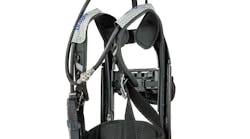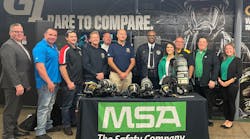Training is by far the most productive and results-oriented activity that any firefighter in any fire department can be involved in. The positive benefits of training are almost endless and cover a large number of areas.
We are all always talking about firefighter safety and survival. Training firefighters in specific survival skills can go a long way in keeping them safe and alive. Training firefighters in rapid intervention skills and abilities increases the chances of distressed or downed firefighters being rescued and surviving. Training firefighters on effective engine and truck company tactics and tasks produces an effective firefighting force that dramatically benefits the community and citizens, along with producing a confident and competent department. All of these benefits rise out of a single activity ‒ training!
Let’s take a look at three simple and inexpensive ideas that can be used by any fire department to raise the level of training, safety and performance.
Drill 1: Wearing SCBA
Training on self-contained breathing apparatus (SCBA) is an absolute must for all interior structural firefighters. We all use SCBA at just about every fire we operate at, but often put little thought into the features and difficulties that we may face while operating in toxic atmospheres. This drill is a simple SCBA familiarity lesson.
Assemble the firefighters in a group on the apparatus floor and have them stand facing each other in a large circle. A single instructor can stand in the center of the circle and conduct the class. Start with the proper donning procedure for an SCBA. Most of us sit down on the apparatus and reach back to put our arms through the shoulder straps of the SCBA, so when we get out of the rig the apparatus is on our backs. Practice the proper technique for donning the SCBA with it on the ground in front of the firefighter.
The next SCBA skill that is important to know is how to locate and tighten an air hose that has loosened and is leaking. Stress that firefighters should KNOW what hand to reach back with and what direction to turn that coupling to tighten it.
Knowing what the purge or emergency air valve is for and how it works is vital. You may never experience an SCBA failure or malfunction, but you still need to know where the purge valve is and which way to turn it to get air when needed.
There are several SCBA emergency procedures that every firefighter should know. The “reduced-profile” maneuver is used to move the SCBA in such a way that it lets the firefighter pass through narrow, restricted spaces. The “full-escape” maneuver is used to remove the SCBA with the facepiece still on the firefighter’s face and supplied with air to pass through restricted areas where the reduced-profile maneuver will not suffice. Both of these important skills can be demonstrated, practiced and perfected right on the apparatus floor.
Drill 2: Forcing entry
Forcible entry is a basic, yet technical skill. Most firefighters cannot really begin to understand and learn the skills without actually doing them. Some very effective forcible entry training props are being manufactured today, but they are quite expensive. If you cannot afford to purchase one of these props, you have a few options.
A relatively small amount of money can be used to buy some lumber, screws and hardware and construct a simple door prop that can be used inside or outside the firehouse. Many sets of plans and drawings are available online and basic construction skills are all that is required. If you build the unit so it is perpendicular to the wall it is attached to, or build it in an open doorway, you can use both sides and train on inward- and outward-opening doors.
Drill 3: Using radios
Radio usage on the fireground is vital to effective communications and firefighting proficiency. However, simply having and using radios may not get the job done. Firefighters must have a clear understanding of the proper usage of fireground radios.
When wearing a radio, the firefighter must know “who” they are. What is your radio identity? The radio or the riding position must be labeled and every radio user must know who they are when someone is calling them and how to answer or acknowledge a message.
This drill can be conducted right in the firehouse as well. Assemble the group on the apparatus floor and hand out all the radios. Dispatch each team or company to a different location in the building and then start making transmissions to each officer with instructions or orders. Have them make transmissions to their radio-equipped members and practice the radios skills that they will need at their next actual operation.
Start with these three drills and see what kind of progress and improvement you can achieve. More drills to come!
Chief Salka takes a candid look at news and events impacting the fire service in his blog “The Fire Scene” at http://www.firehouse.com/blogs/the-fire-scene.
JOHN J. SALKA Jr., a Firehouse® contributing editor, is a retired FDNY battalion chief who was commander of the 18th Battalion in the Bronx. Salka has instructed at several FDNY training programs, including the department’s Probationary Firefighters School, Captains Management Program and Battalion Chiefs Command Course. He conducts training programs at national and local conferences and has been recognized for his firefighter survival course “Get Out Alive.” Salka co-authored the FDNY Engine Company Operations manual and wrote the book First In, Last Out – Leadership Lessons From the New York Fire Department. He also operates Fire Command Training, a New York-based fire service training and consulting firm.
Connect with John
Email: [email protected].
Website: firecommandtraining.com





